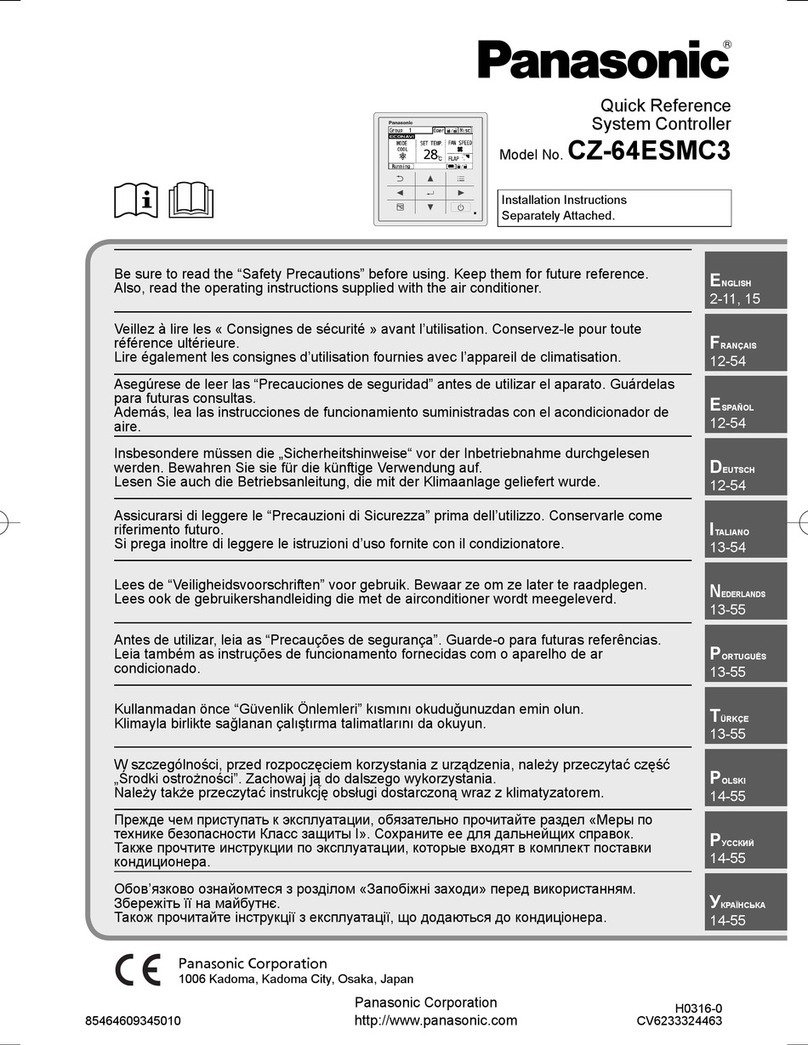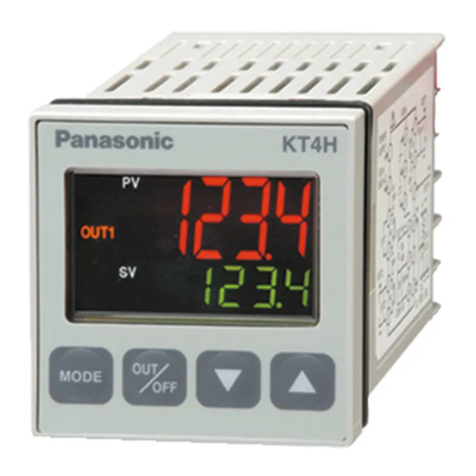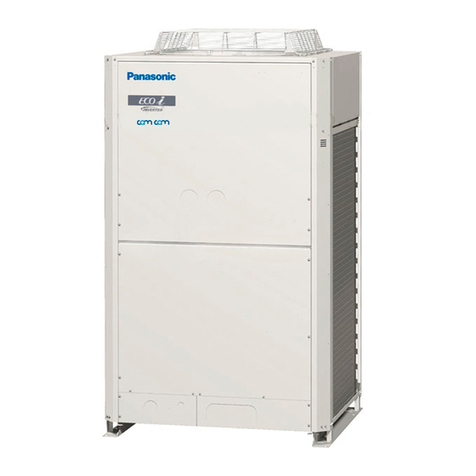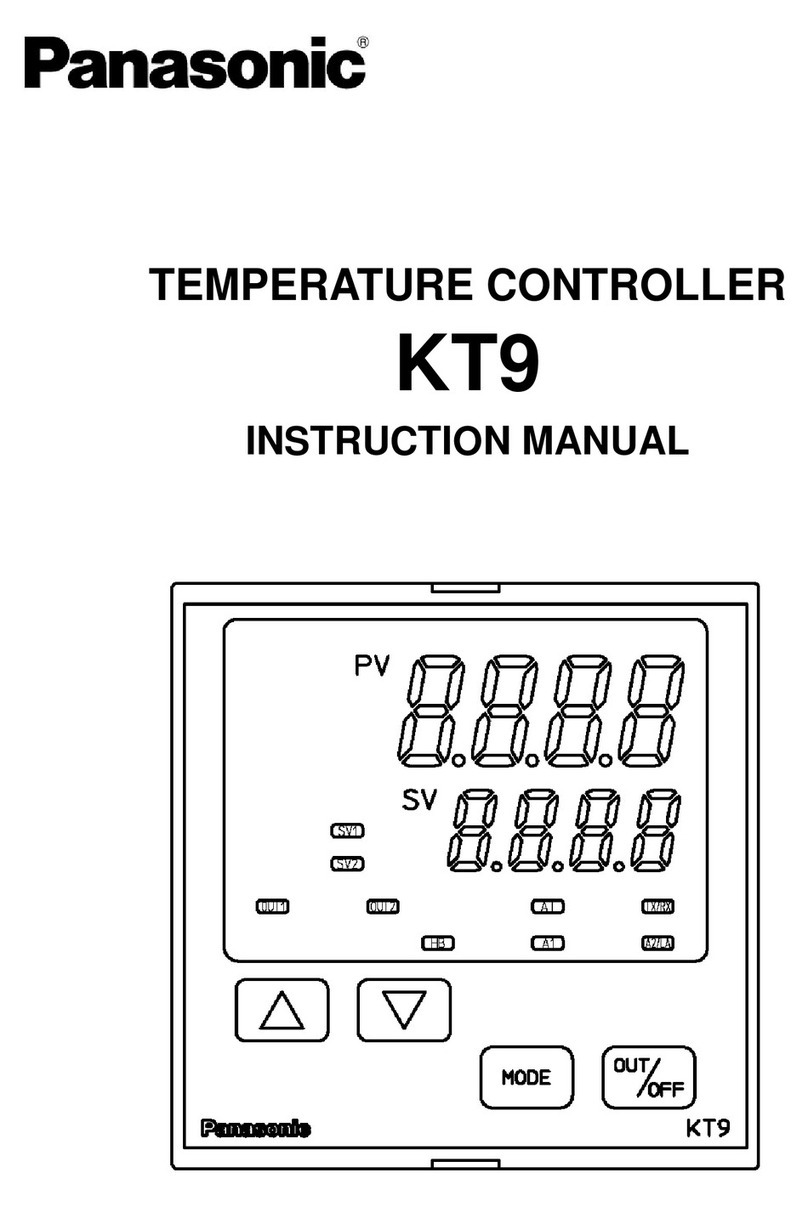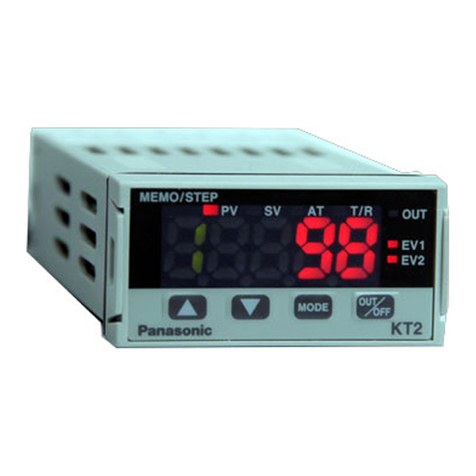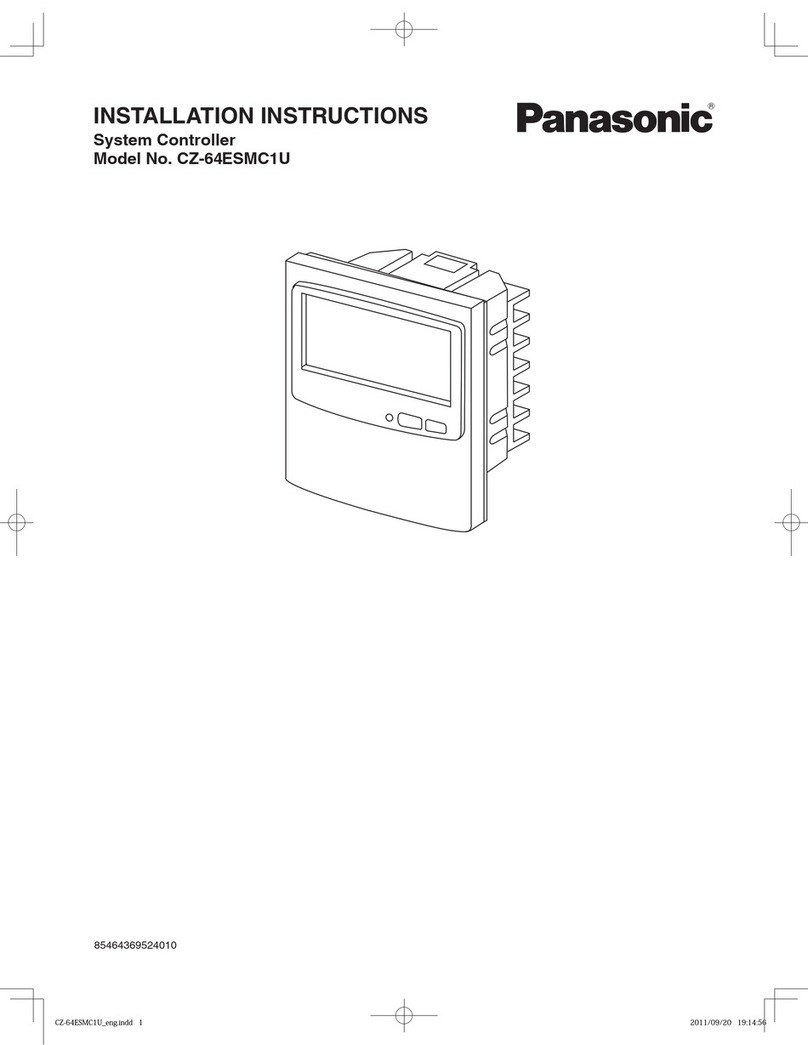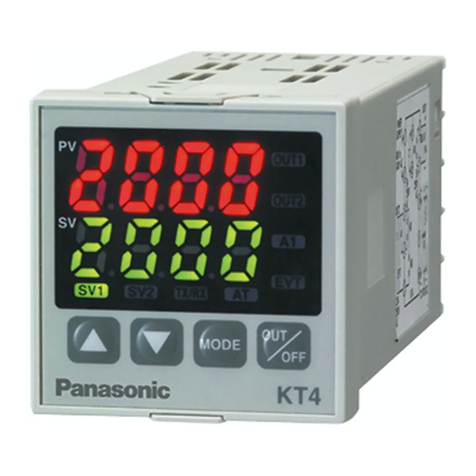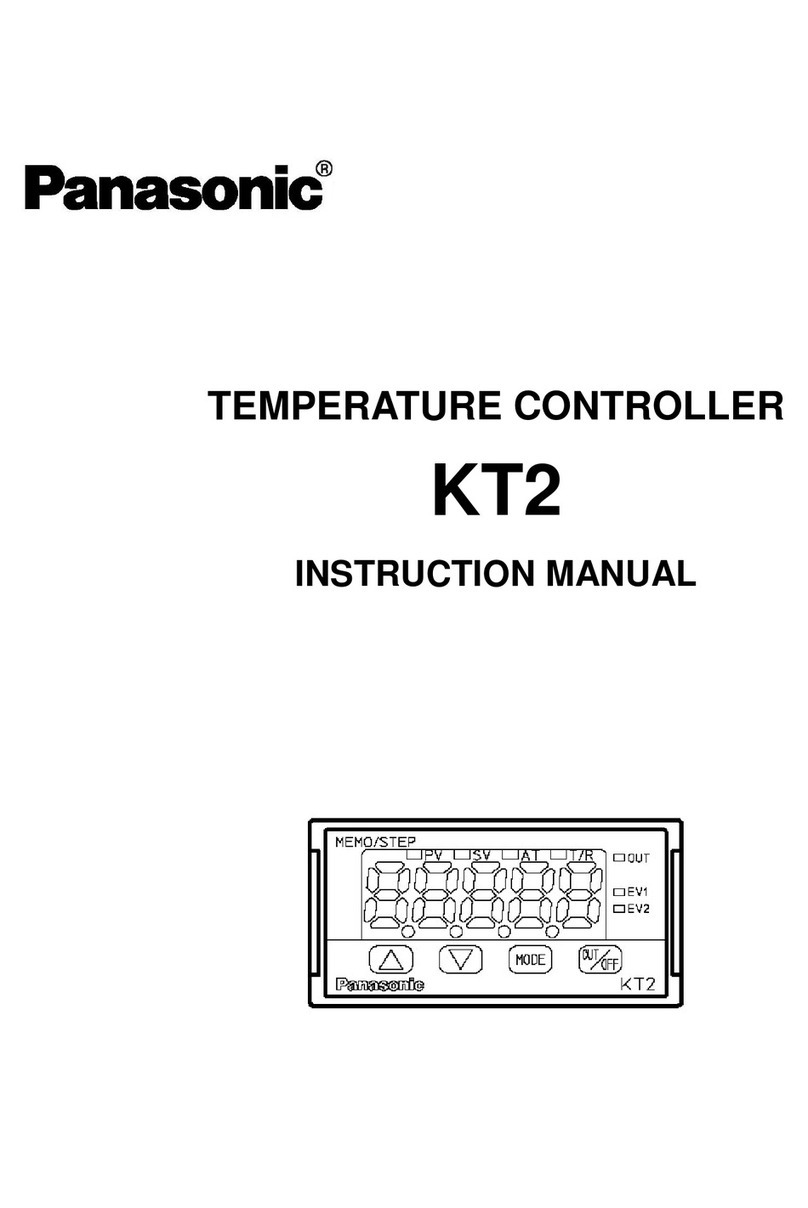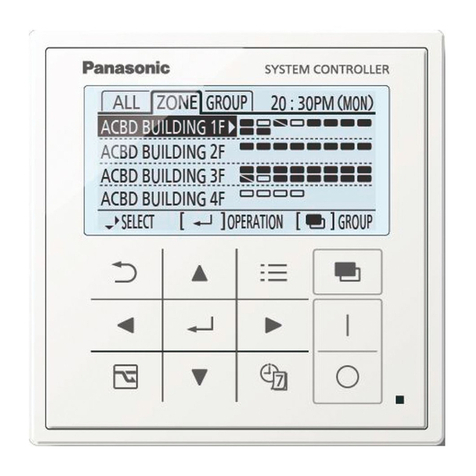
4
When Lock 1 or Lock 2 is used, every time the set value is changed by the communication function,
the changed value is written in the non-volatile memory. If the value changed by the
communication function is the same as previous one, it is not written in the non-volatile memory.
When Lock 3 is used and if the set value is changed, the changed value is not written in the
non-volatile memory until the power to the controller is turned off. This has no relation to the limit
for changes in set value.
Therefore, be sure to use Lock 3 when changing the set value frequently via communication.
5. Communication procedure
Communication starts with command transmission from the host computer (hereafter Master) and ends
with the response of the KT7 (hereafter Slave).
• Response with data
When the master sends the reading command, the slave
responds with the corresponding set value or current
action status.
• Acknowledgement
When the master sends the setting command, the slave
responds by sending an acknowledgement after the
processing is terminated.
• Negative acknowledgement
When the master sends non-existent command or value
out of the setting range, the slave returns a negative
acknowledgement.
• No response
The slave will not respond to the master when broadcast
address is set, or when there is a communication error
(framing error or parity error), or when LRC or CRC
(Fig.5-1) discrepancy is detected.
Communication timing of the RS-485
Slave side
When a slave starts transmission through RS-485 communication line, the slave is arranged so as
to provide an idle status (mark status) transmission period of 1 or more characters before
sending the response to ensure the synchronization on the receiving side.
The slave is arranged so as to disconnect the transmitter from the communication line within a
1 character transmission period after sending the response.
Master side (Notice on setting a program)
Set the program so that the master can disconnect the transmitter from the communication line
within a 1 character transmission period after sending the command in preparation for reception
of the response from the slave.
To avoid the collision of transmissions between the master and the slave, send the next command
after carefully checking that the master received the response.
6. Modbus protocol
6.1 Modbus protocol
Modbus protocol is a communication protocol for the PLC developed by Modicon Inc.
6.2 Transmission mode
There are 2 transmission modes (ASCII and RTU) in Modbus protocol.
6.3 ASCII mode
Hexadecimal (0 to 9, A to F), which is divided into high order (4-bit) and low order (4-bit) out of 8-bit
binary data in command is transmitted as ASCII characters.
Data format Start bit : 1 bit
Data bit : 7 bits
Parity : Even/No/Odd (Selectable)
Stop bit : 1 bit/2 bits (Selectable)
Error detection: LRC (Longitudinal Redundancy Check)
Data interval : 1 second or less
(1) Message configuration
ASCII mode message is configured to start by [: (colon)(3AH)] and end by [CR (carriage return)
(0DH) + LF (Line feed)(0AH)]. (See Fig. 6.3-1)
(Fig. 6.3-1)
Slave
address Function
code Data Error check
LRC Delimiter
(CR)
Header
(:) Delimiter
(LF)
Command
Data
Command
Acknowledgement
Command
Negative
acknowledgement
Command
No response
Master Slave
